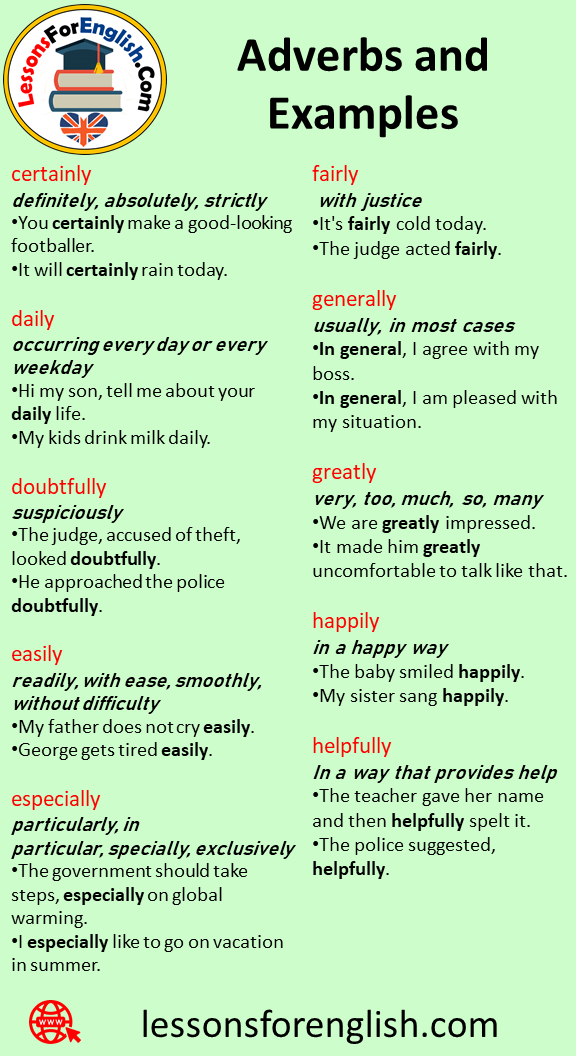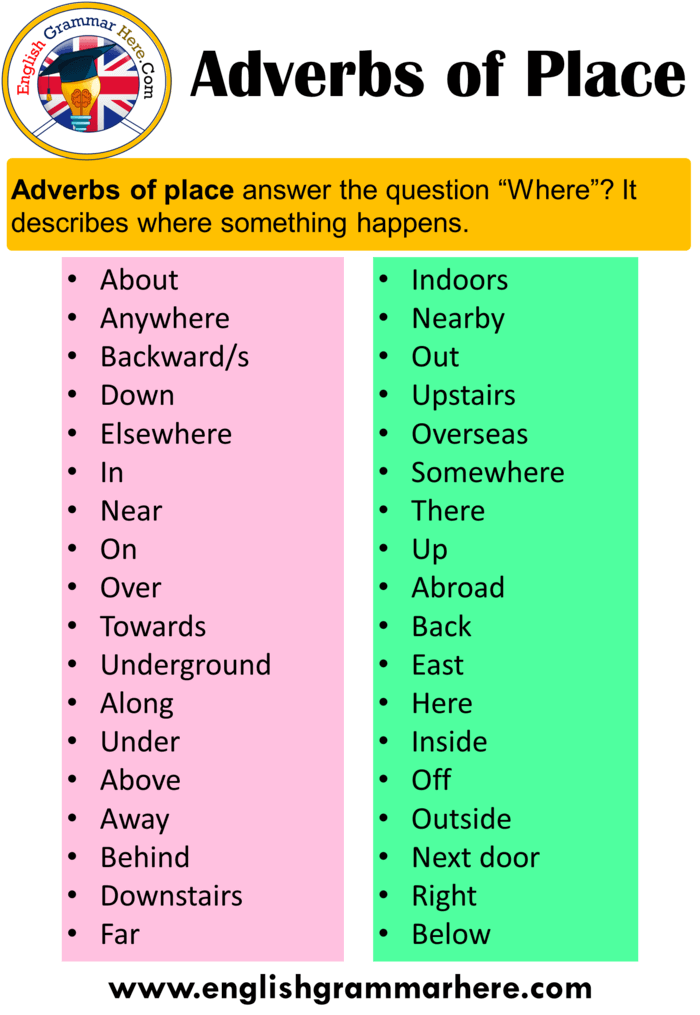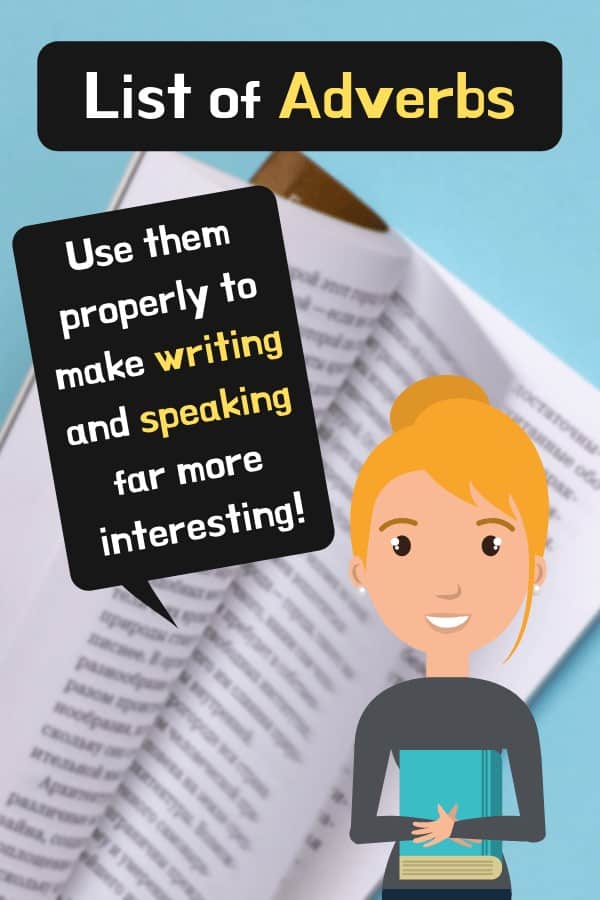
Adverbs of place: Adverbs that say where something happens. Examples include very, really, extremely, somewhat, less, and most. Adverbs of degree: Adverbs that describe intensity or quality. Examples include weakly, skillfully, amazingly, slowly, and surprisingly. Adverbs of manner: Adverbs that say how something happens. Examples include now, yesterday, soon, eventually, and yet. Adverbs of time: Adverbs that say when something happens. Examples include frequently, never, always, and sometimes. Adverbs of frequency: Adverbs that say how often something happens. Some examples include however, therefore, meanwhile, thus, and consequently. 
Conjunctive adverbs: Adverbs that act as conjunctions to grammatically join two sentences/clauses together.Generally speaking, adverbs can be divided into several different types. For example, the sentence Jack ran quickly uses the adverb quickly to modify the verb ran. Like adjectives, adverbs provide more information about the words that they modify. They washed, dryed, and ironed the clothes.Īn adverb is a word that modifies a verb, adjective, clause, or another adverb.The milk turned sour because he left it out overnight.The following sentences show how we typically use verbs in sentences: appear, bounce, catch, deny, envision, fasten, grab, hang, imagine, jiggle, kick, laugh, make, notice, open, pounce, quake, ride, sing, tickle, unlock, vex, worry, xerox, yell, zoom.This list gives examples of just a tiny number of them: There are a huge number of verbs out there. To learn a lot more about verbs, check out our detailed guide to verbs here.

We have only scratched the surface of verbs.
State of being: be, exist, become, have, turn, continue. Mental action: think, consider, believe, hope, doubt, wonder. Physical action: jump, run, cry, eat, swim, climb, play, read. In brief, physical actions refer to actions that bodies or objects perform, mental actions refer to actions the brain performs, and states of being describe someone’s or something’s existence or qualities they have. In general, there are three major types of verbs: verbs that refer to physical actions, verbs that refer to mental actions, and verbs that refer to states of being. While the subject tells us who or what is doing something, the verb/predicate tells us what they do. Verbs are used to fulfill the role of the predicate, which is needed to form a complete sentence. What is a verb?Ī verb is a word that is used with a subject to state what action a subject performs, what state it is in, or the relation it has to something else. Adverbs can act as conjunctions or describe frequency, time, place, manner, or quality. An adverb is a modifier that provides more information about a verb, adjective, clause, or other adverb. 
A verb fills the role of the predicate in a sentence and expresses physical action, mental action, or a state of being.







 0 kommentar(er)
0 kommentar(er)
